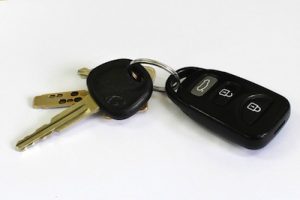
Distracted driving tends to get a lot of attention in the media, but is it really as dangerous as it is made out to be? Some have speculated that, while irresponsible, distracted driving is not nearly as lethal as drunk driving or even road rage. The data below compares statistics to see what plays the largest role in accidents and fatalities.
In New York, distracted driving is limited to the use of electronic devices while driving. For statistical purposes, though, distracted driving includes things like eating, adjusting the radio, talking to a passenger, putting on makeup, or even changing clothes. Putting all that together, in 2014, 3,179 people were killed in crashes involving a distracted driver.
Drunk driving is more than three times as lethal as distracted driving. According to the CDC, 9,967 people were killed in 2014 by alcohol-impaired driving crashes. This accounts for nearly one-third (31%) of all traffic-related deaths in the U.S. Thankfully, drunk driving appears to be on the decline, unlike distracted driving, which has risen considerably.
If those figures are unsettling, then consider this: the number of traffic fatalities from aggressive driving (road rage) is more than twice that of drunk driving, and more than six times higher than that of distracted driving. The National Highway Traffic Safety Administration (NHTSA) reports that 66% of traffic fatalities – 21,565 – were caused by road rage in 2014. Even more alarming is that 37% of road rage incidents involved a firearm. Over a seven-year period, 218 murders and 12,610 injuries were attributed to road rage.
To make matters worse, road rage often begets more road rage. NHTSA states that half of drivers who are on the receiving end of an aggressive behavior, such as horn honking, a rude gesture, or tailgating, admit to responding with aggressive behavior themselves.
The data seems to support the idea that distracted driving is not as lethal as road rage or drunk driving. In fact, some research has shown that driving while distracted can actually make drivers more cautious. A 2008 University of Utah study found that drivers who were distracted drive more slowly and change lanes less often. This behavior, researchers say, slows down traffic.
However, an earlier study, also conducted at the University of Utah, found that drivers talking on cell phones crash more often than those who are slightly impaired by alcohol. That’s not surprising given that the number of non-lethal injuries from distracted driving in nearly twice that of drunk driving: 424,000 vs. 210,000.
Clearly it’s dangerous to drive while drunk, distracted, or angry, and determining a lesser evil depends on your perspective. Ultimately, it’s best to get behind the wheel only when calm, sober, and focused.
It’s worth noting that while a wide variety of things can be considered distracted driving for purposes of aggregated data, under statutes VTL 1225-c and VTL 1225-d, an officer in New York can only ticket you for use of a cell phone or other portable electronic devices, such as a handheld GPS, MP3 player, or camera. Consequences vary but can include fines of $150 and five points on your license for a first offense.
It is essential that you retain an attorney if you have been ticketed for a traffic violation or charged with a driving-related crime. The lawyers of the Rosenblum Law are experienced traffic ticket attorneys with offices in New York and New Jersey. Email or call 888-203-2619 for a free consultation about your case.



